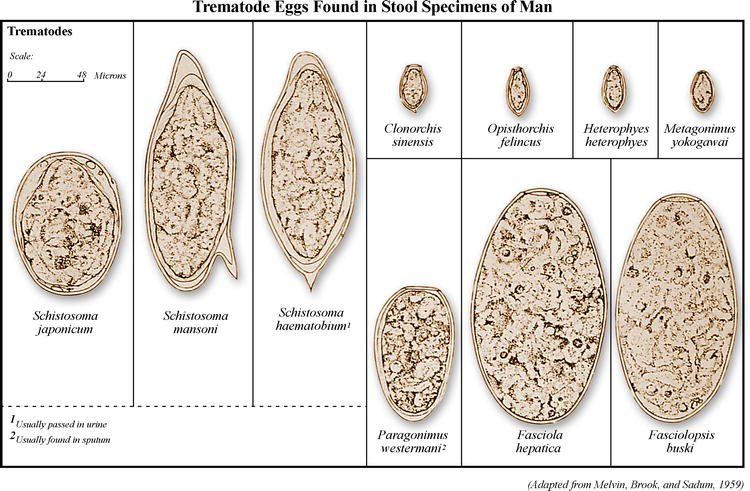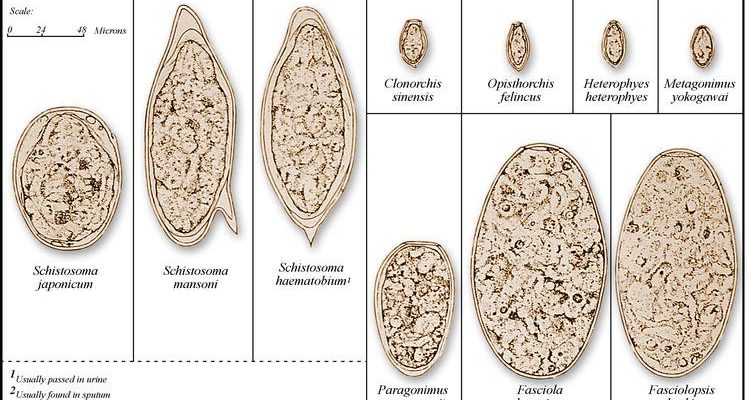
Trematodes, also known as flukes, are notorious for their parasitic lifestyle. They often inhabit the bodies of various hosts, from fish to mammals, and they can cause quite a stir in their ecosystems. However, these worms are just one piece of the puzzle. There are many other worm species that share the same habitats, each with its own role and adaptations. Understanding how trematodes compare to these other worms can shed light on their ecological significance and the balance of their environments.
In this article, we’ll dive into the world of trematodes and explore how they stack up against similar worms, looking at their habitats, life cycles, and relationships in the ecosystem.
What Are Trematodes?
Trematodes are a type of flatworm belonging to the class Trematoda. These parasites have a unique body shape, often flattened and leaf-like, which helps them cling to their hosts. They typically have suckers that allow them to attach firmly to the tissues of their hosts. Trematodes can be found in various environments, including freshwater, marine, and even terrestrial ecosystems.
One of the most intriguing aspects of trematodes is their complex life cycles. Many trematodes develop through multiple stages, including larval forms that can infect various intermediary hosts. For instance, a common trematode like the liver fluke requires both snails and cattle to complete its life cycle. This multi-host requirement makes them particularly interesting and sometimes troublesome from a public health perspective.
What’s fascinating is the adaptability of trematodes. They can live in some pretty harsh environments, showing just how resilient they are. This adaptability can lead to interactions with other worm species in their habitats, which can significantly impact local ecosystems.
Other Worm Species in Similar Habitats
In the same habitats where trematodes thrive, you’ll find a variety of other worm species. Some of the most notable include nematodes (roundworms), annelids (segmented worms), and even other types of flatworms. Each of these worms has unique characteristics and ecological roles.
Nematodes are incredibly diverse and can be found in nearly every environment on Earth. They play essential roles in soil fertility and nutrient cycling, often feeding on bacteria, fungi, and even other worms. Annelids, like earthworms, are critical for soil health as they aerate the soil and break down organic matter.
These worms don’t just coexist; they interact in ways that can influence their populations and behaviors. For example, while trematodes are busy infecting hosts, nematodes might be thriving in the same soil, helping break down materials and returning nutrients to the ecosystem. It’s a delicate dance of life where every species has its part to play.
Life Cycles: Trematodes vs. Other Worms
Understanding the differences in life cycles between trematodes and other worms can reveal much about their ecological strategies. Trematodes typically have complex, multi-stage life cycles involving multiple hosts. After eggs are laid in a host, they hatch into larvae, which then must find a suitable intermediate host, like a snail. This process can be particularly fascinating—imagine a tiny larva trying to navigate its way to a new host!
In contrast, many nematodes and annelids have more straightforward life cycles. For instance, nematodes often reproduce quickly and can complete their life cycles in a matter of weeks, sometimes even days. Annelids, like earthworms, have a more direct life cycle as well—laying eggs in the soil where they then develop into juvenile worms.
This difference in life cycles affects how these worms interact with their environments. Trematodes, with their multi-host requirements, can impact populations of potential hosts, while nematodes and annelids contribute more to the decomposition and nutrient cycling processes in their ecosystems.
Ecological Roles of Trematodes
Trematodes might be seen as the bad guys in the worm world, especially since many of them are parasitic. They can cause diseases in their hosts, leading to significant health issues, especially in livestock. However, their role in the ecosystem is more nuanced. For one, they provide a food source for some predators, including birds and fish, which helps maintain the balance of the food web.
Their parasitic nature also plays a role in regulating host populations. By keeping host numbers in check, trematodes can help prevent overpopulation, which might lead to resource depletion. It’s a bit like the role of a referee in a game—keeping things in balance so that everyone has a chance to thrive.
However, as with many parasites, an overabundance of trematodes can lead to negative consequences for host populations, potentially destabilizing ecosystems. This dual nature makes their ecological role fascinating and complex.
Comparing Adaptations: Trematodes vs. Other Worms
Trematodes have developed some incredible adaptations that help them thrive in their specific niches. Their unique suckers and body structure are well-suited for attaching to hosts and navigating their surroundings. Furthermore, their ability to manipulate the behavior of their hosts—sometimes altering their movement or even their attractiveness to predators—shows just how specialized these worms can be.
On the flip side, other worms like nematodes and annelids have their own set of adaptations that allow them to prosper. Nematodes, for instance, have a tough outer cuticle that helps them survive in diverse environments, while annelids have segmented bodies that offer flexibility for burrowing and movement through soil.
These adaptations highlight the different evolutionary paths taken by these worms and how they are suited to their specific ecological roles. While trematodes are masters of manipulation and parasitism, nematodes and annelids excel in roles that promote health and sustainability in their ecosystems.
The Impact of Habitat on Worm Species
The habitat where these worms reside greatly influences their behavior, life cycle, and interactions. Trematodes thrive in environments rich in potential hosts, usually freshwater or brackish areas. Their life cycles are specifically adapted to these habitats, meaning any change in the environment can impact their survival.
In contrast, nematodes are found in a range of habitats from ocean floors to mountain tops, showing incredible adaptability to various conditions. Annelids, especially those like earthworms, are more commonly associated with moist soil and terrestrial environments, playing a crucial role in soil health.
Changes to these habitats, whether from pollution, climate change, or human interference, can have dramatic effects on all worm species. In some cases, the introduction of invasive species can disrupt the balance, leading to a decline in native populations, including trematodes.
When we look at the relationship between trematodes and other worm species, it becomes clear that they all contribute to the larger ecological picture. Each species plays its part, whether it’s through parasitism, nutrient cycling, or soil health. Trematodes, while often viewed negatively due to their parasitic nature, have their place in the ecosystem.
Understanding these interactions helps us appreciate the complexity of life beneath our feet and in our waters. By studying how these worms coexist, compete, and thrive, we can gain insights into the health of their ecosystems and what we can do to protect them. So, next time you think about worms, remember that there’s a whole world of fascinating interactions happening right beneath the surface!

